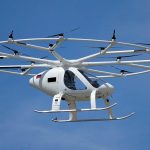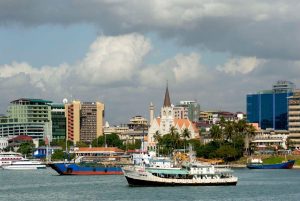According to the World Economic Forum (WEF), aviation is responsible for 3 per cent of global carbon dioxide emissions. This may not seem like a lot, but while most economic sectors are shrinking their carbon footprint, aviation’s is rising. Without significant action, the contribution to global emissions could soar to 22 per cent by 2050 as passenger numbers rise.
In 2021, global airlines, convened by the International Air Transport Association (IATA), committed to reversing this trend to reach net-zero emissions by 2050. While greener air travel is possible, it will be a challenging task, particularly at a time when airlines are still reeling from the financial losses they have incurred during the pandemic.
Perhaps the most straightforward path to greener flights and more sustainable air travel is to swap out traditional kerosene jet fuel for environmentally friendly alternatives, known as sustainable aviation fuels (SAFs). SAFs are produced using cooking oil, household waste or plant matter, and can be blended in with kerosene to fuel existing planes without modifying their engines. Once you factor in production and transport, the use of SAFs can lead to 80 per cent less carbon emissions than the use of kerosene in a single flight.
Figures produced by the IATA show that almost 400,000 flights to date have already been powered by SAF. In 2021, 100 million litres of fuel were produced. The catch? Sustainable fuels currently account for just 0.1 per cent of global consumption, and typically cost three times more than conventional fuels. Although production is ramping up, there is still a long way to go.
In time, and with enough government support, the IATA estimates that more widespread use of SAFs could enable a 65 per cent cut in aviation’s overall emissions, but they are just one piece of the puzzle.
Going electric is an obvious route to making more sustainable air travel. With an increasing proportion of electricity coming from low-carbon sources such as wind or solar power, electric vehicles can dramatically cut the carbon emissions linked to travel. But electric planes face one considerable hurdle: weight. While a kilogram of jet fuel packs away 12,000Wh of energy, a lithium-iron battery only manages 250Wh per kilogram.
What’s more, while a traditional plane gets lighter as it burns up its fuel, batteries offer no such savings. This makes electric long-haul flights a non-starter for the foreseeable future – any plane with sufficient battery power for long-haul flights would simply be too heavy to take to the skies.
Instead, a raft of companies are focusing on smaller planes that could travel on shorter routes, or hybrid models where electricity complements a traditional engine. Budget airline EasyJet, for example, is currently developing a fully electric plane capable of carrying 186 passengers, which it hopes could cover short routes such as London to Amsterdam from 2030.
Elsewhere, hydrogen has been heralded as the clean energy source of the future, with its combustion releasing only water vapour. Hydrogen aircraft can either burn hydrogen directly as a fuel or use it to generate electricity using hydrogen fuel cells. In 2020, ZeroAvia retrofitted a six-seater plane and flew the first passenger flight powered by hydrogen fuel cells.
But hydrogen comes with its own set of challenges. Although by weight, hydrogen holds more energy than jet fuel, it takes up a much larger volume, even when cooled into a liquid state. To generate the same amount of power as a standard plane, a hydrogen jet would need a fuel tank four times the size, leaving less space for passengers or freight.
Additionally, although hydrogen can be produced with near-zero emissions, the majority of hydrogen used today is derived from natural gas, using a process that releases carbon dioxide. The success of hydrogen-powered flight would also be reliant on developing a ‘hydrogen economy’: the wide-ranging global infrastructure required for hydrogen to be produced cleanly, stored and transported around the world.
Source: Science Focus






